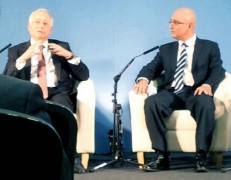“What does it take to commercialise micro- and nanoscale research and development?” is a tough question to answer in a one-day meeting, but the UK’s NanoKTN managed to pack plenty of advice into the latest in its series of popular NanoEntrepreneurs workshops – held this time in partnership with law firm Covington and Burling (C&B) in London.
The event began by looking at the some of the first steps in the translation pathway from concept to commercialization, which includes tasks such as creating a company and developing an intellectual property (IP) strategy.
IP is a key consideration for any start-up, as the strength of a firm’s IP portfolio is likely to be an important factor in raising funds to grow the business.
In her talk, Morag Peberdy from C&B looked at the different ways a company can protect its ideas, namely – patents, trademarks, copyright, trade secrets and through design registration.
There are some useful questions to ask to identify the most appropriate route to take, for example:
– How easy is it to reverse engineer your product?
– Will you be required to disclose materials details to regularity authorities or via product labelling (a growing concern for developers of nanomaterials)?
It’s not a simple exercise, but there are benefits to thinking about IP sooner rather than later.
“The right strategy will allow you to spend your money wisely and bring savings over the long term,” Peberdy told the audience.
To guide their thoughts, she emphasised the need to focus on the competition – who are they, where are they based, and when will their products hit the market?
In the second half of this introductory session, Peberdy’s colleague James Halstead simplified the starting-out process by distilling the business proposition into a series of key elements –
People (innovators, implementers and investors)
Property (IP and physical property)
Relationships (contacts and contracts)
Like Peberdy, he encouraged firms to begin their strategic thinking early on, in this case to make sure that the interests of innovators, implementers and investors are aligned to head off any future bottlenecks and speed up decision making.
For example, what are the objectives of the company:
– to sell the business,
– out license,
– or to sell technology products and services?
For more details on the workshop, which also included talks on creating trustworthy and dynamic teams, and public support mechanisms for the commercialization of emerging technologies – view the full programme on connect.innovateuk.org.


